A strikingly beautiful small multicolored bird that likes to inhabit the canopy of humid wooded regions.
Meet the green-headed tanager
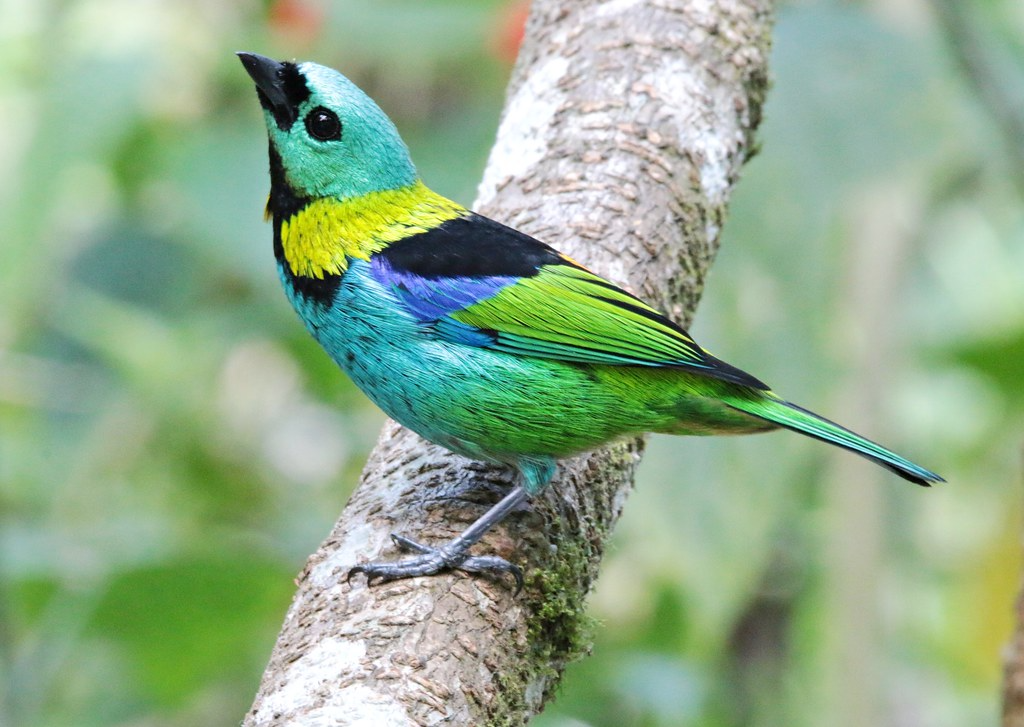 “saíra sete cores – Tangara seledon” by luizmrocha is licensed under CC BY-SA 2.0.
“saíra sete cores – Tangara seledon” by luizmrocha is licensed under CC BY-SA 2.0.
The green-headed tanager ( Tanara seledon ) is a colorful bird that typically inhabits the humid Atlantic forest. Surprisingly, its striking plumage serves as good camouflage among the vegetation. The male shows bright and complex plumage, with aquamarine green on the head, nape and chin, and a wide greenish-yellow band that crosses the nape and upper mantle. The back and scapulars are black, while the rump is orange-yellow and the upper tail coverts are bright apple green.
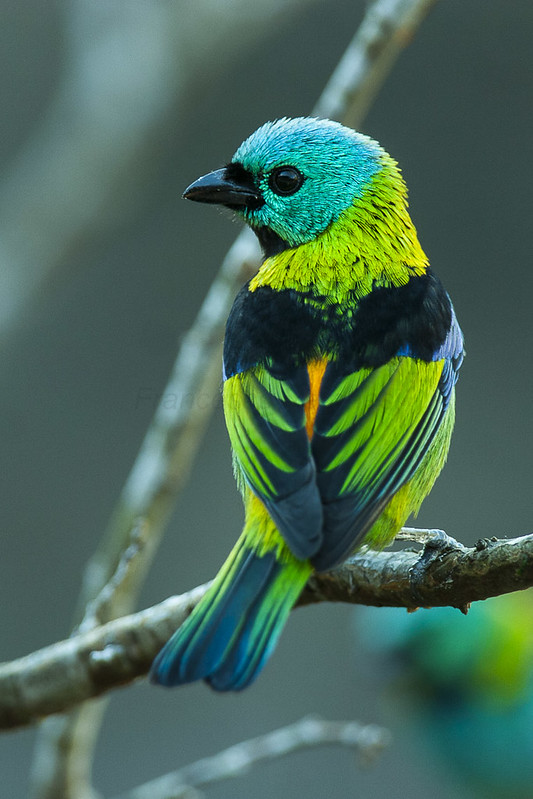 “Green-headed Tanagara – Itatiaia – Brazil_MG_0114” by fveronesi1 is licensed under CC BY-SA 2.0.
“Green-headed Tanagara – Itatiaia – Brazil_MG_0114” by fveronesi1 is licensed under CC BY-SA 2.0.
The female resembles the male but has a slightly duller appearance.
Juvenile birds are less vibrant than adults.
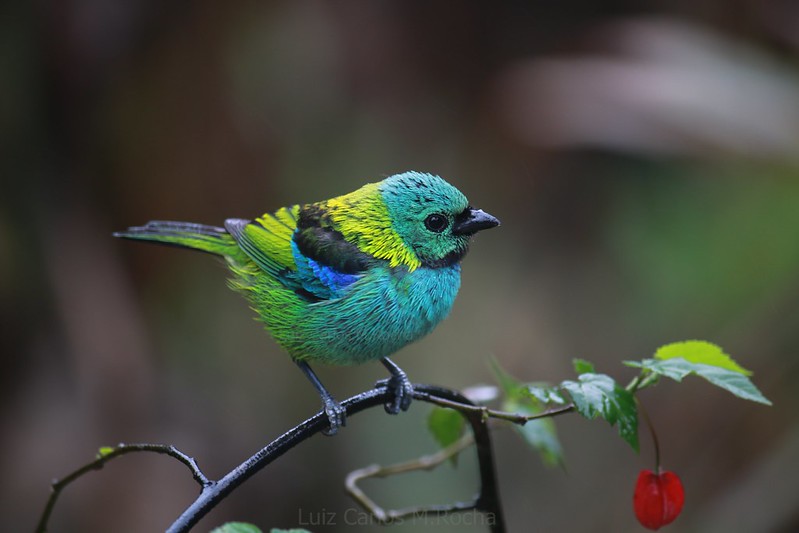 “Saíra sete cores – Tangara seledon” by luizmrocha is licensed under CC BY-SA 2.0.
“Saíra sete cores – Tangara seledon” by luizmrocha is licensed under CC BY-SA 2.0.
This species is prevalent in southeastern Brazil, adjacent parts of southeastern Paraguay, and northeastern Argentina.
 Photo courtesy of Ben Tavener / CC BY 2.0
Photo courtesy of Ben Tavener / CC BY 2.0
The green-headed tanager is commonly found in orchards, parks and gardens, and in forest edges and clearings where there are trees and shrubs. It can be seen from lowlands up to 900 meters, but is most often found at lower elevations.
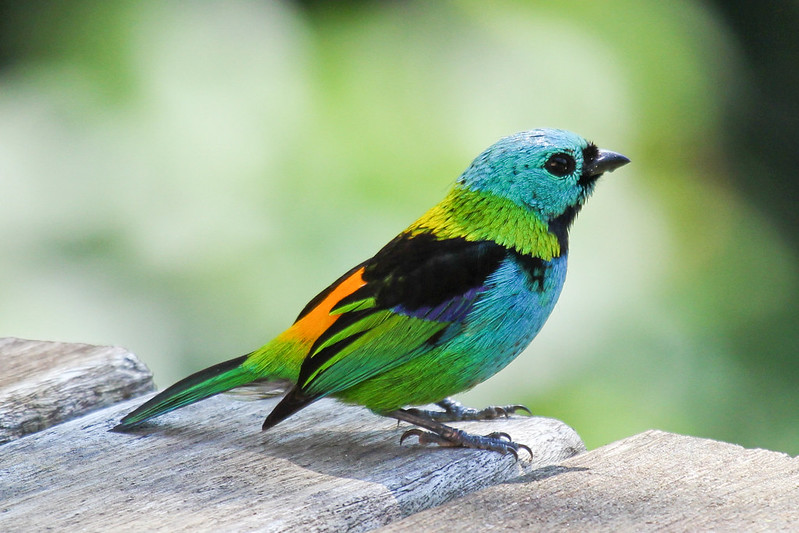 Photo courtesy of Lars Falkdalen Lindahl / CC BY-SA 2.0
Photo courtesy of Lars Falkdalen Lindahl / CC BY-SA 2.0
The green-headed tanager feeds primarily on fruits and arthropods, including cultivated and wild fruits, bromeliad berries, and a variety of other sources. Forages in pairs or small groups, sometimes up to 20 birds, and may join mixed-species flocks to forage. The green-headed tanager is an active forager, performing acrobatic movements while jumping along branches, picking up leaf surfaces and bark, and manipulating fruits with its beak.
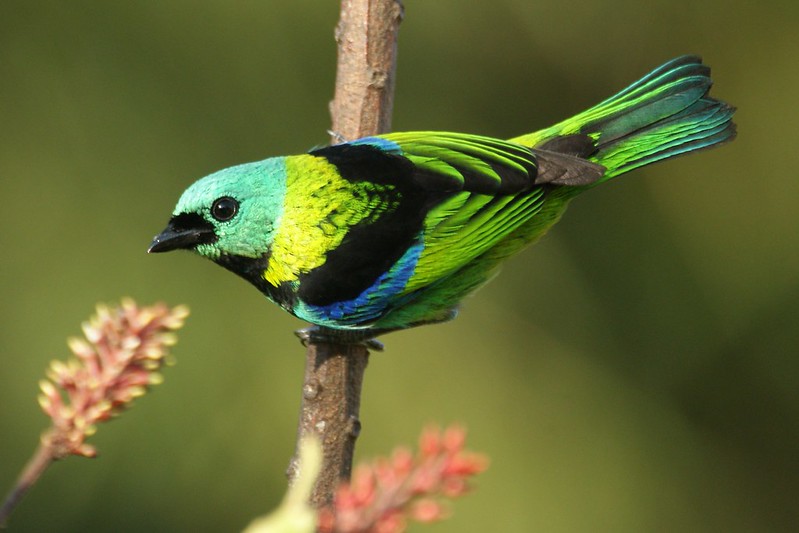 Photo courtesy of Ben Tavener / CC BY 2.0
Photo courtesy of Ben Tavener / CC BY 2.0
During the breeding season, the green-headed tanager is monogamous and builds a compact cup-shaped nest of grass and leaves, lining it with soft materials. Both parents participate in nest building, egg laying, and incubation. The male is occasionally reported to feed the female during courtship. The female lays 2 to 3 pale eggs and the incubation period lasts 13 to 14 days. The young fledge 14 to 18 days after hatching and still depend on their parents for food for several weeks after fledging. A second breeding is often attempted, and young from previous breedings may accompany the adults for several months during the first year.
 Photo courtesy of Francesco Veronesi / CC BY-SA 2.0
Photo courtesy of Francesco Veronesi / CC BY-SA 2.0
Although the green-headed tanager has disappeared from some recently deforested areas and is absent from remaining forests in southeastern Brazil, the species is not currently threatened. It is rare or quite common locally and populations are usually confined to protected areas.
 Photo courtesy of Ben Tavener / CC BY 2.0
Photo courtesy of Ben Tavener / CC BY 2.0
See this bird in action:





